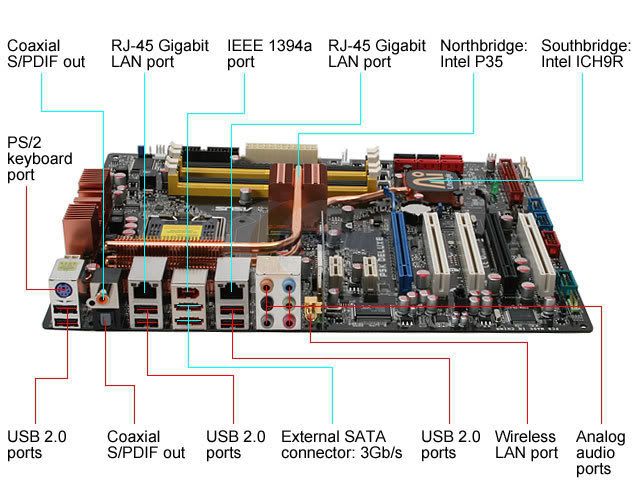
Model
Brand ASUS
Model M2R32-MVP
Supported CPU
CPU Socket Type AM2
CPU Type Athlon 64 X2 / Athlon 64 FX / Athlon 64
FSB 1000MHz Hyper Transport (2000 MT/s)
Chipsets
North Bridge AMD 580X CrossFire
South Bridge ATI SB600
Memory
Number of Memory Slots 4×240pin
Memory Standard DDR2 800
Maximum Memory Supported 8GB
Dual Channel Supported Yes
Expansion Slots
PCI Express x16 2
PCI Express x1 2
PCI Slots 2
Storage Devices
PATA 1 x ATA100 2 Dev. Max
SATA 3Gb/s 4
SATA RAID 0/1/0+1
Onboard Video
Onboard Video Chipset None
Onboard Audio
Audio Chipset ADI 1988A
Audio Channels 8 Channels
Onboard LAN
LAN Chipset Marvell 88E8001
Max LAN Speed 10/100/1000Mbps
Rear Panel Ports
PS/2 2
COM 1
USB 4 x USB 2.0
IEEE 1394 1 x IEEE 1394a
eSATA 3Gb/s 1
S/PDIF Out 1x Coaxial
Audio Ports 6 Ports
Onboard USB
Onboard USB 3 x USB 2.0 connectors support 6 ports
Onboard 1394
Onboard 1394 1 x 1394a connector supports 1 port
Physical Spec
Form Factor ATX
Dimensions 12.0" x 9.6"
Windows Vista Certified
Power Pin 24 Pin
Packaging
Package Contents M2R32-MVP
Rear I/O Panel Shield
User Manual
Driver Disk
IDE/PATA Cable
FDD Cable
SATA Cable
Power Cable
Bracket
Good Things
With AM2 socket, newer X580 northbridge, newest ATI 3200 south bridge for excellent gaming performance. Suitable for building a gaming rig. Board was easy to assemble and has a good layout. Everything so far seems supported under Linux (Fedora Core 6/7 and CentOS) with some tweaks (pci=nomsi,nommconf etc). BIOS has included updater which is great for non-Windows users. Completely stable for 72 hours straight of very high workload. RAID1 works fine.
Bad Things
This board will not support ATI CrossFire at resolutions above 1600x1200. This is not mentioned in the spec but is buried on page 148 of the user manual you have to download.
Suggestion
Out of the box, this motherboard does not support Brisbane core processors due to the lack of odd core multipliers, and the BIOS version the board shipped with doesn't support the odd multipliers (this is a return to old school stuff for AMD- 9.5, 10.5, 11.5 and so on) this is how you get the odd clocks (1.9 Ghz, 2.1 Ghz, 2.3 Ghz and so on). Once the BIOS are updated, Windows Vista goes right in with Brisbane.
